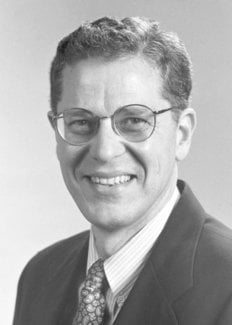Joseph H. Taylor Jr.
Biographical

I was born on March 29, 1941, in Philadelphia, Pennsylvania, the second son of Joseph Hooton Taylor and Sylvia Evans Taylor. When I was seven we moved back to the family farm in Cinnaminson Township, New Jersey, then operated by my paternal grandfather. We were three children, joined later by three more, plus two Evans cousins; like the farm’s peaches and tomatoes, the eight of us grew and ripened in a healthy and carefree environment on the eastern bank of the Delaware River. Among my fondest boyhood memories are collecting stone arrowheads left on that land by its much-earlier inhabitants, and erecting, together with my brother Hal, numerous large, rotating, ham-radio antennas, high above the roof of the three-story Victorian farmhouse. With one such project we managed to shear off the brick chimney, flush with the roof, much to the consternation of our parents. That incident was one of many practical lessons of my youth, not all absorbed in the most timely fashion, involving ill-advised shortcuts toward some goal.
Both the Evans and Taylor families have deep Quaker roots going back to the days of William Penn and his Philadelphia experiment. My parents were living examples of frugal Quaker simplicity, twentieth-century style; their very lives taught lessons of tolerance for human diversity and the joys of helping and caring for others. Our house was large, open, and friendly. To my knowledge it has never been (nor indeed can be) locked. In our school years, Hal and I filled most of the third floor with working ham-radio transmitters and receivers. Our rigs were mostly built from a mixture of post-war surplus equipment and junk television sets. We learned by experience that when you need high voltage, the power company’s 6,000-to-120-volt transformers work admirably in reverse; and that most amplifiers will oscillate, especially if you don’t want them to.
I was educated mostly at Quaker institutions, in particular Moorestown Friends School and Haverford College. In school, mathematics was my first academic love. Somewhat backward high-school introductions to chemistry and physics (I failed to recognize them as such at the time) did not dampen any enthusiasm for science, they just gave me more time for sports, then a greater passion. Soccer, basketball, baseball, golf, and tennis claimed much of my energy through the Haverford years. Concurrently, though, I began discovering the delights of what science is really about. A fascinating senior honors project in physics allowed me to combine a working knowledge of radio-frequency electronics with an awakening appreciation of scientific inquiry, and to build a working radio telescope. My principal references were an old friend, The Radio Amateur’s Handbook, and an early book on radio astronomy by Pawsey and Bracewell. This thoroughly enjoyable honors project cannot really qualify as research – everything I accomplished had been done by others, years before – but it provided excellent lessons in problem-solving of various kinds. It also delivered a valid reason for selecting something I had been hoping to find: a desirable field of physics in which to pursue graduate studies.
My academic work in the Harvard departments of Astronomy, Physics, and Applied Mathematics was the hardest I ever remember working, at least during my first year there. I suppose every beginning graduate student feels that he or she has something to prove; anyway, I certainly did. But my thesis research in radio astronomy was, once again, thoroughly enjoyable. My mentor, Alan Maxwell, knew the field and its participants well. He gave me plenty of flexibility, provided inroads and introductions when I needed them, and taught me (among many other things) the importance of clear, well-crafted writing in a scientific paper. Ron Bracewell again played an unwitting role; his 1965 book The Fourier Transform and its Applications came out just in time to give me some crucial insights necessary for analyzing the data for my thesis. It also prepared me for understanding the signalprocessing techniques that later became important in my study of pulsars.
I have noticed in recent years that many budding scientists worry much more than I ever did about what the future may bring: how to get into the best university, work with the biggest names, find the best post-doctoral fellowship, and secure the ideal university position. My own psychological bent, insofar as it has influenced any professional decisions, is to pursue a path promising enjoyment along the way, without looking too far ahead. Perhaps related to my Quaker upbringing, I’ve always valued personal involvement in a difficult task over appeals to eminence or authority; I like the challenge of re-examining a problem from fresh perspectives. Ultimately, I believe that in important matters we are mostly self-taught, but in a way that is strongly reinforced by cooperative human relationships. I have worked in two extremely stimulating intellectual environments, first at the University of Massachusetts and more recently at Princeton. I’m fortunate to have associated with some uniquely gifted individuals who have been especially compatible co-seekers of diverse truths and pleasures: among them Dick Manchester, Russell Hulse, Peter McCulloch, Joel Weisberg, Thibault Damour, Dan Stinebring, students too numerous to name, and especially my dearly beloved wife, Marietta Bisson Taylor.
This autobiography/biography was written at the time of the award and later published in the book series Les Prix Nobel/ Nobel Lectures/The Nobel Prizes. The information is sometimes updated with an addendum submitted by the Laureate.
Nobel Prizes and laureates
Six prizes were awarded for achievements that have conferred the greatest benefit to humankind. The 14 laureates' work and discoveries range from quantum tunnelling to promoting democratic rights.
See them all presented here.
